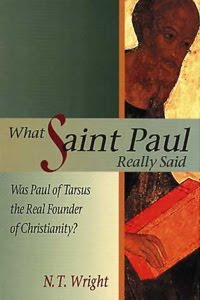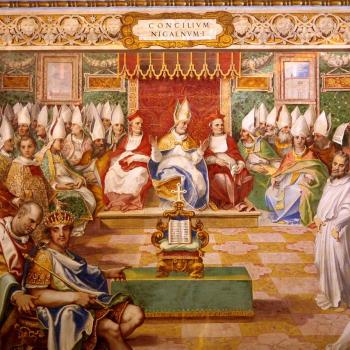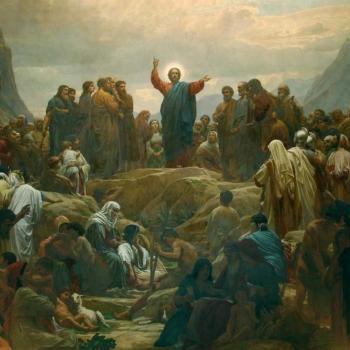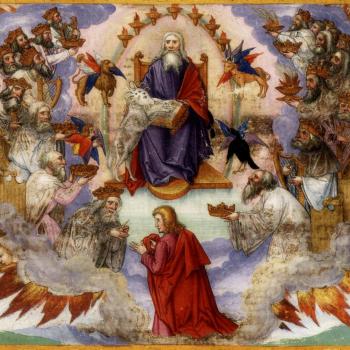 I’ve recently begun reading back through N. T. Wright’s classic, What Saint Paul Really Said. I can’t say enough how refreshing he is for my soul. When I get weary from reading another Reformed guy say the same things the last Reformed guy said, Wright helps my sanity (at least temporarily).
I’ve recently begun reading back through N. T. Wright’s classic, What Saint Paul Really Said. I can’t say enough how refreshing he is for my soul. When I get weary from reading another Reformed guy say the same things the last Reformed guy said, Wright helps my sanity (at least temporarily).
Anyway. In Chapter 8, Wright has some intriguing thoughts on the implications of God’s renewal of humanity in Paul’s theology. He introduces the chapter by saying:
Paul articulated … a way of being human which he saw as the true way. … It is not simply a matter of ‘get saved’ and then ‘learning how to behave.’ It is a multi-textured vision, woven together to meet various specific needs, and promoted with all the energy that, Paul declared, his God inspired within him” (136).
He then lays out five categories of God’s renewal of humanity, which essentially combats two groups of people: pagans and unbelieving Israel.
1. Worship. Wright describes this as “the center” of renewed humanity. Worshiping the God revealed in Jesus Christ and the Holy Spirit sets itself over and against the worship of pagan idols, and is the type of worship Israel failed to attain. The one who worships God in this way is brought into a new community, becoming “a more complete human being” by reflecting the image of the one true God.
2. Resurrection. This is “the goal” of renewed humanity. “If the road to true humanity is true worship,” Wright says, “the end goal of God’s renewed humanity is of course resurrection.” For Wright, the hope for resurrection in Christ offers “a reality of which (in [Paul’s] view) paganism is the parody.” Pagans did not offer a solution life after death (and Judaism had only been pointing to it), but Christ had set into motion a new age, the beginning of the end, that would one day come to completion in the final resurrection.
3. Holiness. This is God’s “transformation” of renewed humanity. In the time between the beginning and the end of human renewal–the here and now–God is “re-integrating” humanity as a response to the “disintegrated” (pagan) humanity left behind by Adam. Wright makes two clarifications: 1) Paul sees holiness as a necessary characterization of renewal in Christ; 2) Paul is also “a realist” and realizes the tension of the now and the not yet. This transformation “is the strong critique of Torah” for Paul because he himself didn’t experience holiness in all his Torah-driven zeal. Christ’s death and resurrection are not past events for Paul; they are the foundation of life.
4. Love. This is “the coherence” of renewed humanity. For Wright, Paul’s “Jew-plus-Gentile united family in Christ cuts against all attempts to make Christianity a sub-brand of Judaism.” Instead, Christ brings to bear what God had intended when he called Abraham: an every-tribe-and-tongue unity under the umbrella of boundary-transcending love. Paganism perverts agape with all sorts of distortion, and Judaism failed to embrace community outside itself.
5. Mission. This is “the zeal” of renewed humanity. “The lordship of Christ challenged the lordship of Caesar,” Wright notes. But he goes further: the restored image of God in renewed humanity sets Christians in authority above any and all pagan empires via true worship of God. God’s mission is not merely individualistic evangelism; it is the fulfillment of the Jewish hope, “a cosmic movement, beginning with the resurrection of Jesus and ending with the renewal of all things.”












